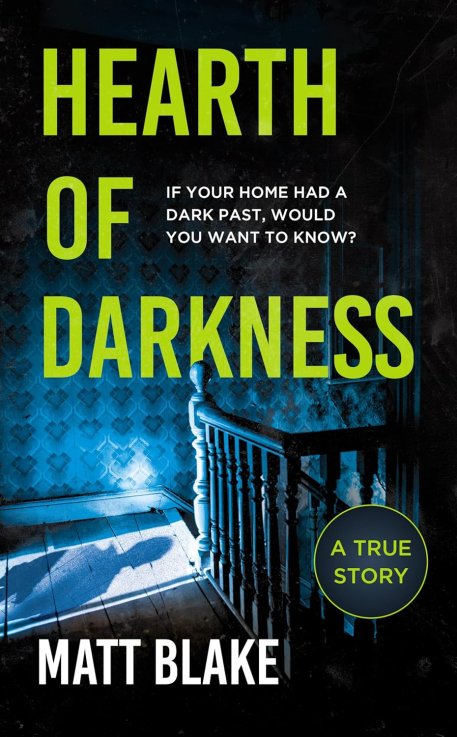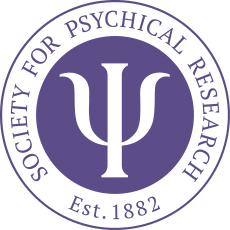
Reviewed by Peter A. McCue
Matt Blake grew up in Islington, north London. He is an acclaimed journalist, who used to be the crime reporter for the Daily Mirror and the Independent. He’s also written for various other publications, such as the Guardian and Daily Telegraph.
Hearth of Darkness is Blake’s first book. It’s based on ‘House of Horror’, an article by him that first appeared in the Guardian’s Saturday magazine.
Blake met Lisa, his wife-to-be, at university. They were together for ten years, and there was no infidelity or abuse. But sadly, as the cliché goes, they ‘drifted apart’. They were divorced in 2019. Lisa bought a small house in Walthamstow in north-east London. She and Blake remained on civil terms, and it was convenient for them to live relatively near each other, because they’d agreed to share custody of their young daughter, Jasmine. Therefore, Blake also bought a house in Walthamstow. At the time (January 2021 or perhaps late 2020), he was unaware that one of its former occupants had been Aman Vyas. In the spring of 2009, Vyas carried out multiple rapes and a murder in the locality. He was dubbed the ‘E17 Night Stalker’. As the hunt for him intensified, he fled abroad. But Vyas was eventually extradited to the UK from his native India. He stood trial in 2020 and was sentenced to at least 37 years of imprisonment for his crimes.
There was evidence of fire damage at Blake’s house, and he discovered that firefighters had been to the street 20 times since the year 2000 (see Chapter 2). It seems that six of the visits were to the address where he now lived, although four of those call-outs were deemed to be ‘malicious false alarms’. As for the two actual fires, the fire brigade wouldn’t tell Blake whether anyone had been killed or injured; and, later, the police, referring to privacy laws, also declined to tell him anything. Furthermore, there was nothing of note in the local paper. But Jackie, a close neighbour of Blake’s, attributed the fires at the house to the Night Stalker: she said that he would light fires in a front bedroom and then come out of the house and sit on a wall opposite, calmly awaiting the fire brigade, although she didn’t know whether he’d lit the fires deliberately. According to two other people living on the street, the house had been used for cultivating cannabis (pp. 58-59). However, that may have been long after Vyas had left the area. Indeed, it should be noted that none of the crimes of which he was convicted took place within the house itself.
Whether related to Vyas or not, odd phenomena were experienced in the house after Blake moved in. For example, one night, he was woken by Jasmine, who’d had a bad dream. She told him that the radio was playing downstairs (pp. xi-xv). When he went down to check, Blake discovered that it was switched on. Strangely, or maybe just coincidentally, a familiar song was being played – it was by Pulp, one of his favourite bands from the 1990s. On another occasion, in the early hours of a Sunday morning, his girlfriend, Jody, told him that she’d heard the doorbell ring, but when he went downstairs and opened the front door, no one was there (Chapter 6).
Blake noticed that some rooms in the house were decidedly colder than others, irrespective of how high the heating was set. There were also unpleasant smells, although they may have been related to rodent incursions. Another disagreeable manifestation was the appearance of large slugs in the house.
In Chapter 17, Blake explains that Jessica, an acquaintance of his, put him in touch with a woman called Natalie. She and her husband owned a large 19th century house in the Wirral, an area in north-west England. Blake made a visit and was told of haunt-type phenomena that had occurred there. However, most of the time, Natalie enjoyed living at the property.
Much of the book revolves around the question of whether events can leave localised traces or impressions that can affect people. It’s a popular notion, often referred to as the ‘stone tape theory’, which is an allusion to a British science fiction TV drama (‘The Stone Tape’), written by Nigel Kneale (1922-2006) and first screened in 1972. Of course, this theory contrasts with the traditional idea that ghostly phenomena are caused by discarnate spirits who, for one reason or another, want to make their presence felt. However, since Aman Vyas is still alive, the discarnate spirit explanation isn’t applicable to the events at Blake’s home, unless we're to assume that the discarnate spirit of someone else (or maybe more than one such spirit) has been making mischief there!
Via video calls, Blake interviewed a range of specialists from the UK and elsewhere, to get their views on his situation. They were:
Dr Jason Bray, a Wales-based Anglican priest who, in addition to performing the ordinary duties of a vicar, is involved in ‘deliverance’ work (Bray, 2021) (Chapter 9);
Dr Christine Simmonds-Moore, a British psychologist/parapsychologist, who is currently based at the University of West Georgia in the USA (Chapter 11);
Dr Pamela Heath, a retired American anaesthesiologist (or anaesthetist, in British parlance), who’s had anomalous experiences of her own, and who maintains a strong interest in the paranormal (Chapter 12);
Dr Dean Radin, a prominent American parapsychologist (Chapter 13);
Professor Alastair Wilson, a philosopher of science at the University of Leeds (Chapter 14);
Professor Carl Philpott, an ENT surgeon and rhinologist, linked with the University of East Anglia (Chapter 15);
Professor Noam Sobel, an olfaction expert and head of the Department of Brain Sciences at the Weizmann Institute of Science in Rehovot, Israel (Chapter 16);
Professor Gerhard Hacker, a retired Austrian medical biologist, who has devoted much of his career to examining the interaction between the human body and the environment (Chapter 18).
Jason Bray, the aforementioned Anglican minister, told Blake that poltergeist activity is always caused by a living person who is present, this being someone who’s usually experiencing trauma or stress that he or she can’t communicate (p. 98). However, this assertion sounds too categorical to me, since there’s reason to believe that poltergeist-type phenomena may sometimes be place-linked rather than person-centred (McCue, 2024a,b).
Through a mutual acquaintance, Blake got to meet a couple called Bruno and Mathilde at their home in north London (see Chapter 22). Their story is intriguing. Some years previously, when they were interested in buying a ground floor flat in Melrose Avenue, Cricklewood, the estate agent advised Bruno to Google it before proceeding. It transpired that the flat had once been occupied by the prolific serial killer Dennis Nilsen, who’d murdered some of his victims there. Notwithstanding the flat’s grim history, Bruno and Mathilde went ahead with the purchace, and they subsequently acquired the upstairs flat as well. They combined the flats into one large property, where they and their children seem happy, and where they can accommodate visiting family and friends.
In the penultimate chapter, Blake refers to renovations that he’s made to his home; and his final chapter sounds positive and optimistic, although he alludes to occasional ongoing phenomena, such as the shower coming on by itself at night (p. 262). Of course, it’s hard to know to what extent, if any, the various manifestations have been paranormal. And if the house is, or was, in some way ‘haunted’, it doesn’t necessarily follow that this relates to the previous occupancy of Aman Vyas.
Various factors, such as his visit to Bruno and Mathilde in Cricklewood, may have helped Blake put the history of his home in perspective and not see it as an enduring curse. However, it’s easy for me to say that. If I’d been in his shoes, I would have been disconcerted to discover that I’d bought a house previously occupied by a rapist and murderer!
In conclusion, I’d say that the book is well written and well researched, and that the intriguing content draws one in. However, there are some literary allusions that are lost on me. But I suspect that the author is an English literature graduate!
References
Bray, J. (2021). Deliverance: Everyday investigations into poltergeists, ghosts and other supernatural phenomena by an Anglican priest. Coronet Books.
McCue, P. A. (2024a). “Hauntings” and “poltergeists”: Time for new terminology? (Part 1). Magazine of the Society for Psychical Research, (13), 8-12.
McCue, P. A. (2024b). “Hauntings” and “poltergeists”: Time for new terminology? (Part 2). Magazine of the Society for Psychical Research, (14), 8-15.

